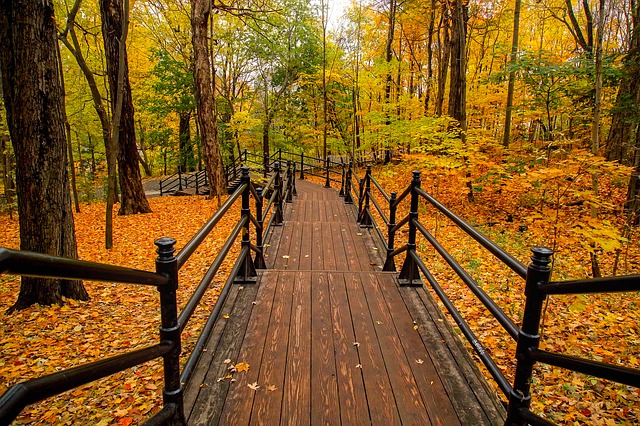
What Is the Earth's Secret for This Fascinating Transformation of Colors in the Fall?
“Winter is an etching, spring a watercolor, summer an oil painting, and autumn a mosaic of them all. ” —Stanley Horowitz
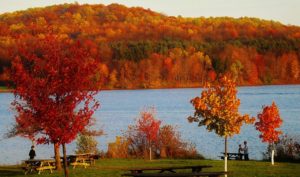
A kaleidoscope of colors ushers in the autumn season announcing the forthcoming winter. As a result, nature provides an amazing palette of orange, red, green, yellow, and brown.
Accordingly, these colors displayed in the autumn leaves provide a miraculous visual encounter.
Visiting the Blue Ridge Mountains of Virginia in autumn is a breathtaking experience and a reminder that “change can be good!” How do the leaves of deciduous trees change colors in the fall? Let’s find out exactly what happens!
In the Beginning a Leaf Is Born
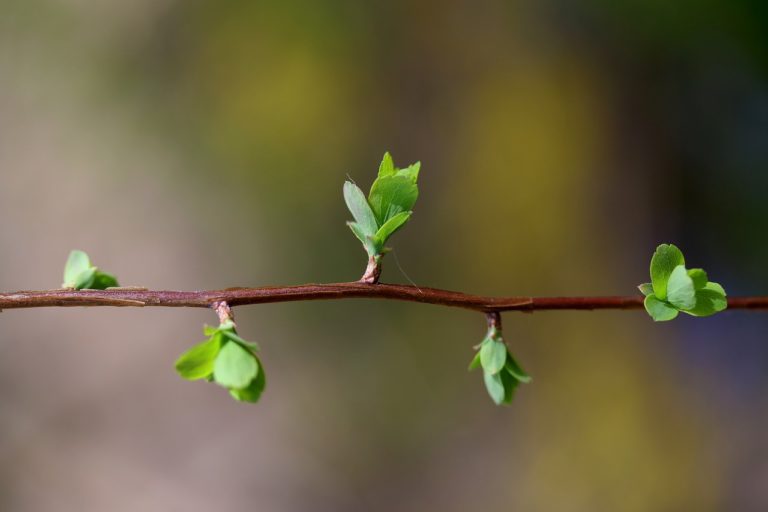
In early spring tiny buds start to form on the bare branches of the skeleton-appearing tree. A few days later, another look reveals a bud is turning into a tiny leaf. Consequently, each day that leaf becomes a little larger until a new leaf is born.
Even in this beginning, the budding leaf serves an important purpose. Straightaway, it produces food for the tree in the form of “sugar sap.” This sap plays an important role in transporting nutrients to all parts of the tree.
The tree then provides water and nutrients to the leaves. As a result, this gives the leaves what they need to make the sugar sap. Indeed, a symbiotic relationship is born – a relationship where each is dependent on the other.
The Leaf Matures - Its Life's Work Moves Forward
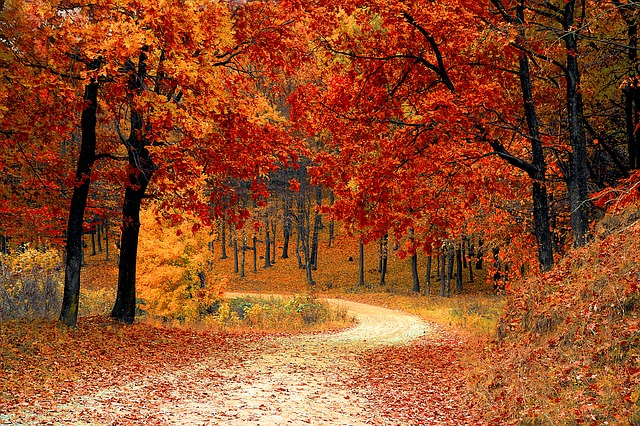
Each leaf provides food for the tree through photosynthesis. As a result, this process allows the leaf to convert water and carbon into food from exposure to sunlight. In addition, leaves also provide an exchange of gases and emit carbon dioxide into the
atmosphere. Carbon dioxide plays a very important role for our planet as stated by UCAR Center for Science Education:
- “Carbon dioxide is an important greenhouse gas that helps to trap heat in our atmosphere. Without it, our planet would be inhospitably cold.”
- “Photosynthesis, the biochemical process by which plants and some microbes create food, uses up carbon dioxide.”
- “Photosynthetic organisms combine CO2 and water (H2O) to produce carbohydrates (such as sugars) and emit oxygen as a by-product.”
- “However, a gradual increase in CO2 concentrations in Earth’s atmosphere is helping to drive global warming, threatening to disrupt our planet’s climate as average global temperatures gradually rise.”
As leaves reach maturity, this process continues, but leaves aren’t just a food factory for trees. They serve other purposes such as:
- A cooling place – The temperature under the shade of a tree can be lower than in the full sun.
- Saving energy – When shade trees are close to buildings or homes, they can reduce the inside temperature. This decreases the need for air conditioning which saves money and energy.
- Removing air pollution – Trees with their abundance of leaves help in removing air pollution.
- Protecting animals – Leaves protect many animals as they hide from their predators.
- Providing food – Leaves provide food for many animals.
- Preventing erosion – The roots of all trees assist in preventing erosion.
“How beautiful the leaves grow old. How full of light and color are their last days.” — John Burroughs
Is Their Life's Work Finished? What's Next?
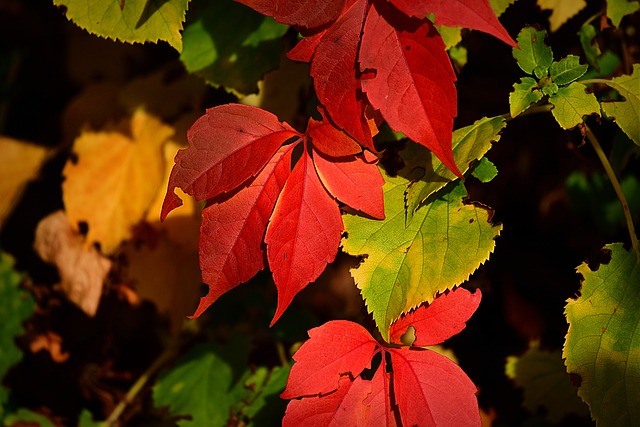
Leaves start to fade, and as they fade something amazing happens! They provide us with a visual experience of brilliant colors in the fall that becomes imprinted in our minds as pure beauty. And for many of us, what happens next is the part we enjoy the most – the visual experience.
In the fall, we see leaves beginning their descent. As a result, they fall from the branches where they have resided through the spring and summer of their lives. We see them gracefully float through the air to the Earth below. This life cycle enriches the Earth and enriches us in the process.
As the leaves make their exit, they do so with the most exhilarating display for our eyes to behold. The brilliant colors in the fall of yellow, orange, and red create a feeling of excitement. Additionally, the subtle hues of these same colors can present a feeling of calmness. This experience can be both energizing and peaceful at the same time. For an in-depth understanding of this encounter, click here to learn how the colors of nature can affect our emotions.
How Do the Colors in the Fall Provide Such a Sensational Visual Experience?
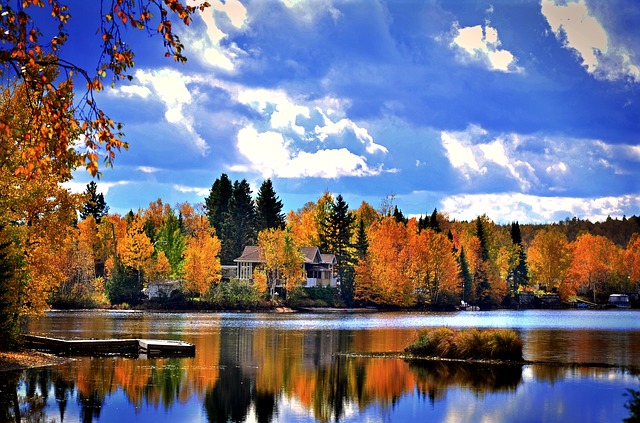
Have you ever wondered, “How do the trees know it’s time?” I remember observing the changing colors of the leaves on a warm fall day and questioning, “It’s still warm, and the leaves are changing. How do they know it’s time?” Indeed, there is an explanation for this phenomenon. According to Gardening Know How this is what happens:
- It begins as summer ends and the days start to get shorter reducing the amount of sunlight available to the leaves.
- This reduces the leaf’s ability to make the necessary food it needs to thrive.
- Due to the lack of sunlight, there is a reduction in the amount of chlorophyll available to the leaf.
- Then the green color of the leaves reverts back to their “true color” which is naturally yellow or orange. The green color produced by the chlorophyll actually masks the true color of the leaf.
- As the chlorophyll production stops, the tree starts to produce a chemical called anthocyanins. This replaces the chlorophyll and is red in color.
- Because some trees can produce anthocyanins faster than others, the leaves on these trees skip the yellow and orange stages and go straight to red.
Amazing how nature works, right? And a little knowledge can give us such an appreciation for the beauty we’re experiencing and the process that makes it happen.
Have These Leaves Completed Their Life Cycle? Is Their Journey Over?
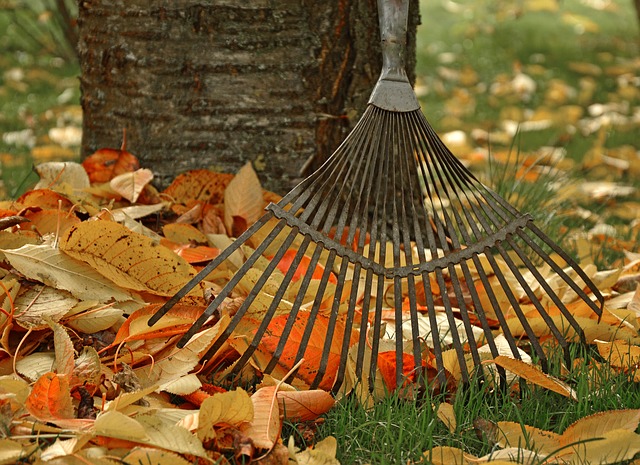
Absolutely not! To clarify, there’s still more work for them to do! Now that there are leaves all over your front yard, what are you going to do with them? Firstly, these leaves are raked up or blown into a pile. Secondly, they are stuffed into trash bags
or other trash receptacles for the waste management to pick up. Could there be a better way? Indeed, there is!
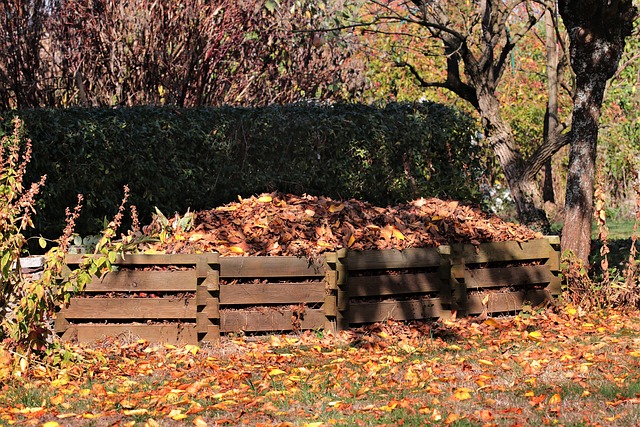
Repurpose the leaves allowing them to finish their natural process – their last job. Enjoy learning how to compost! This isn’t as difficult as it may seem. Click here to learn how to compost for complete and simple instructions. Learn how to enrich
your soil nature’s way and provide a foundation for plants to thrive.
In conclusion, leaves complete what seems to be their “last job.” But this isn’t the end of their work. As they decay, they feed microorganisms in the soil. These tiny creatures ingest the leaves and change them into nutrients trees need to thrive. Finally, as the leaf completes its last job, it’s actually beginning the process of new birth.
In a Nutshell - How to Enrich the Earth and Your Life Through Nature
- Understanding the life cycle of a leaf is a simple way to increase your appreciation for the miracles nature performs each day.
- Comparing the life cycle of a leaf to that of humans helps us recognize how we connect to the elements of nature.
- Our visual experiences can unite us with nature as she fills all our senses.
- Everything in nature has a purpose as all humans have a purpose. Through this purpose, nature connects its cycle of life to the next generation.
- Give back to nature so she can continue to gift you with her treasures. Compost those leaves and add them to your garden, vegetable or ornamental and enrich the soil.
- Allow nature to enrich your life’s experiences by immersing yourself in her beauty.
Please add your comments below and share with us your experiences with nature. If you’ve found a magical place with amazing colors in the fall, please tell us about it. It could be the springboard to someone’s next vacation!

Linda Rose is a freelance writer for hire who provides article writing, blog writing, and website content services. With over 16 years of professional experience as a business owner, a designer of beautiful gardens and landscapes, and an advocate for the Earth, she is passionate about encouraging people to learn and connect with the Earth through her writing.